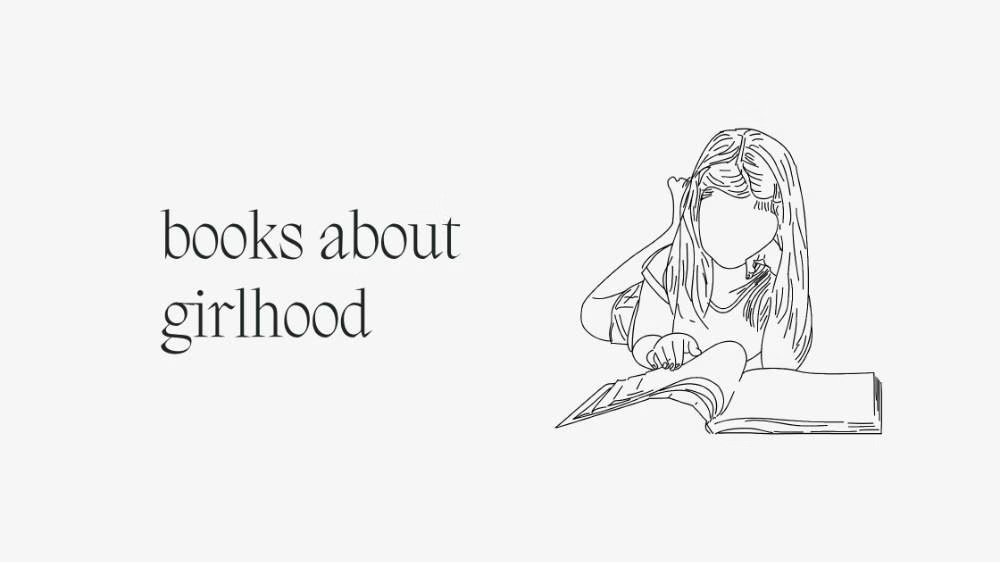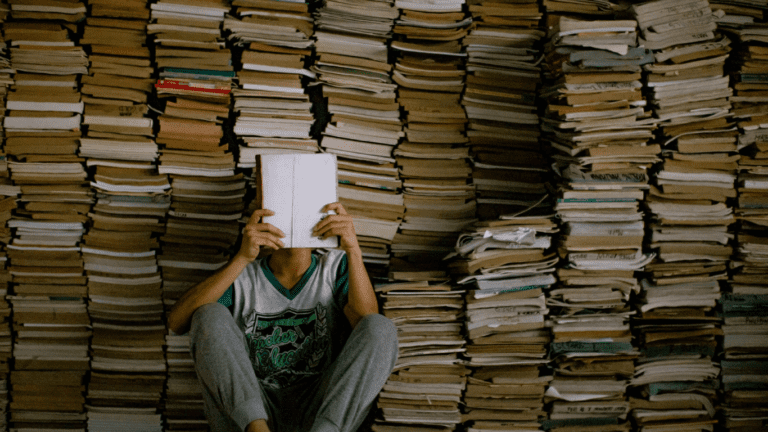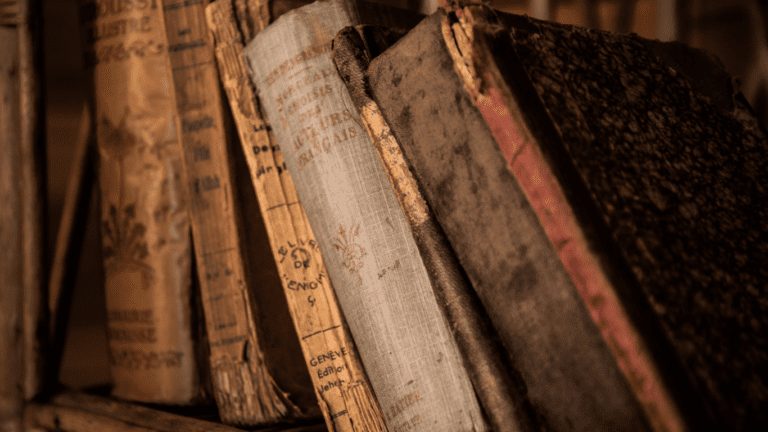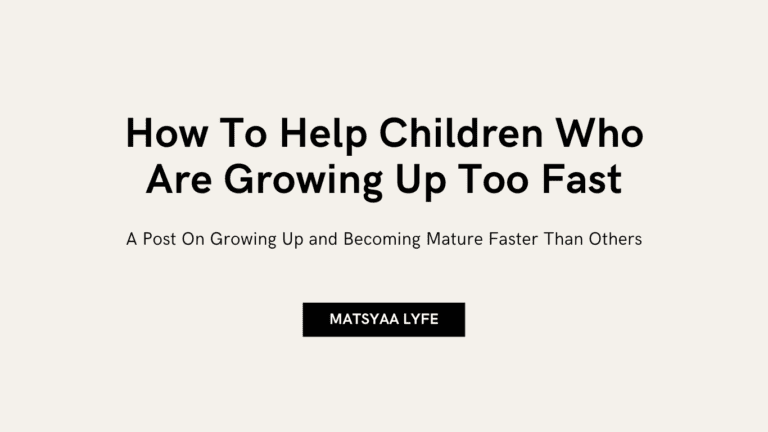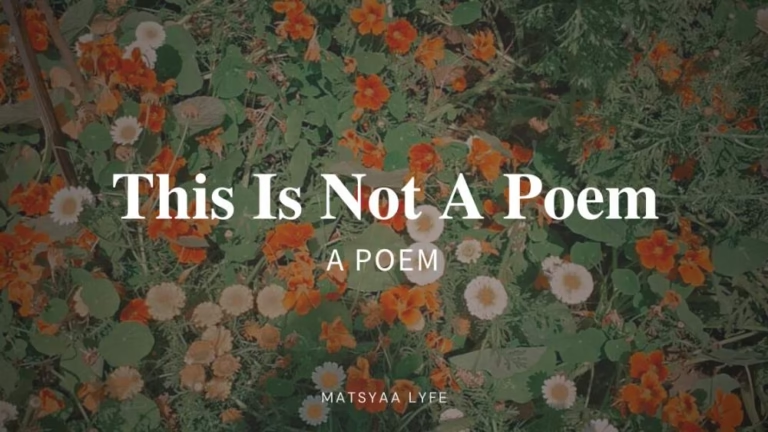Beautiful, Messy, Kind Books About Girlhood
Books about Girlhood
Poetry that deals with the idea of girlhood and books about girlhood, whether it be the innocent kind, the romantic kind, even the violent kind, gets a lot of attention. The girls want to read it, the women who want to be girls back again want to read it, once-in-a-blue-moon a guy wants to read it too, to see how the girls fare with this aspect of their identity.
Because being a girl encompasses a lot of things. And literature is one place where all of them get discussed, in all their multiple facets and interpretations. In this post, I bring to you a list of 11 books about girlhood to revive your feelings of being a girl.
Table of Contents
#1 The Bell Jar
It’s obvious we’d want to begin our analysis with the one poet who has written about her own girlhood with so much fervor and melancholy that her writings have proved to be solace for girls all around the world. Sylvia Plath’s revolutionary book focuses on female mental health issues in glaring detail, with beautiful prose and unrestrained honesty.
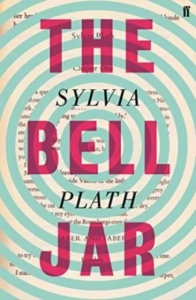
Esther Greenwood is a twenty something young woman who wants and fears and thinks. The book deals with women’s mental health issues on a level that hadn’t been explored yet.
“The silence depressed me. It wasn’t the silence of silence. It was my own silence.”
It dives into the mind of a girl who has barely stepped into adulthood and shows the world through her eyes—new and fascinating and frighteningly vast. Esther thinks so loudly, feels so intensely, and hates with such passion that it is impossible to not think of her as a painfully real girl.
There is an intellectual melancholy, even when she thinks she knows nothing about the world, even when she doubts herself. Her youth seems like a superficial sheen, covering an old, cynical mind that is just pretending to be new to experience everything all over again.
She is proud. She is ambitious. She is mean, sometimes. She thinks too much and keeps thinking. She is also brave enough to reach for what she wants and to hold it close. She is, most of all, just a girl who desires and wants and accomplishes, which makes her all the more relatable.
#2 Little Women
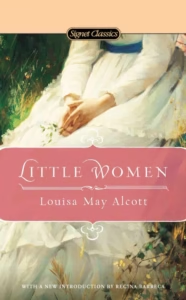
This is perhaps the most beautiful, realistic and loved tales about girlhood. Jo, Meg, Amy and Beth are all of them so alike, and yet immeasurably different, each with her own dreams and desires and ambitions, each with her own problems and limitations. Jo wants to write and succeed and be something in her own right. She wants to soar, she has dreams and she wants the world to be the landscape she draws them on.
Meg wants too, but her dreams are different. She dreams of simplicity, of happiness, of love and peace. Unlike Jo, she doesn’t long for independence so much as the comfort and love of family. It is often the thing they differ on—the things that Jo doesn’t always get. But even with their differences, they try to understand and respect what the other wants.
Beth dies too young, and her death haunts the book, makes you look at those who could’ve been so much more had they been given the chance. Her gentle nature, her smiles and soothing words and patience isn’t something that makes her weak. They show her quiet strength, her faithful determination.
Amy is perhaps the most real of all sisters. She is just a child the beginning of the book, and she makes childish mistakes, but then she grows up into a fierce girl, and eventually a clever, bold woman who knows what she wants and isn’t afraid to reach for it.
She is flawed but we cam embrace those flaws that represent the humanity of all female characters—that bring them down from the pedestal, and make them more than just blank objects that reflect what we want them to.
#3 Jane Eyre
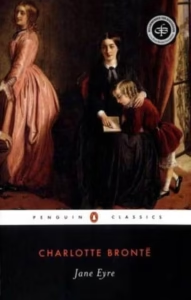
Her girlhood begins as something that has failed itself from the very beginning. The cruelty of her guardian Mrs Reed never quite settles in in the reader’s mind. How could a ten-year-old face all of that and still one day heal past it all to make her own place and her own life is empowering. But that presupposes a kind of hurt that only some girls do face after all. “Left to myself, I abandoned myself.”
Her girlhood is a strong example of one that refuses ro be tamed. “I am not deceitful. If I were I should say I loved you; but I declare I do not love you.” Girlhood is fury. Girlhood is gloomy. Girlhood is growing old but carrying the wound forever.
But the red room will always haunt her, after all. It’ll never quite make its way out of her heart, she’ll get older and older and those memories of her girlhood will just age alongside but never lose that vividness. Brontë’s definition of girlhood is spiritual, and, as i like to think, almost a religion in itself. Even her love for a man (20 years older than her?!) is not one that accepts submission.“I am no bird; and no net ensnared me: I am a free human being with an independent will.” She does not outgrow her girlhood. She grows into it.
#4 Summer Sisters
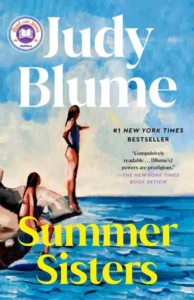
This is a quietly devastating story about girlhood friendships, the kind that haunt you even after a long time. In a summer spent together, these two girls Victoria and Caitlin discover love, desire, that space, that transformation from girlhood innocence to adult complexity. Girlhood is not left behind. It’s something that grows with you over time. Even after decades, the memory of it, of that one summer when you turned into a woman—with always be vividly remembered.
#5 Carmilla
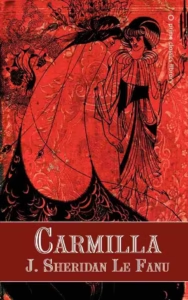
Known as the first novel about vampirism, written even before Dracula, this tale about girlhood introduces it as both enchantment and danger. Girlhood is not waiting to be protected. It unsettled you, the dark castles, the vivid dreams, the feeling that you’ve seen this person in your sleep since you were a kid.
The intimacy between Laura and Carmilla definitely gives critics food for thought and space to delve deeper into the queer aspects of the novel. But more than that, it’s a mystery that is both sacred and transgresses. Affection turns into desire, desire into fear. The danger comes not from a ghost or a haunted castle or a creature. The danger comes from the girl. Beauty is lethal.
The innocent maiden consumes passionately what she wants to, and her desire exist completely outside of male control. “Sometimes after an hour of apathy, my strange and beautiful companion … “ Carmella awakens inside Laura a desire to be seen, not be just the Angel of the House anymore. Carmella tears the ideal of the Victorian society, that defines girlhood as purity and obedience, apart.
#6 A Room of One’s Own
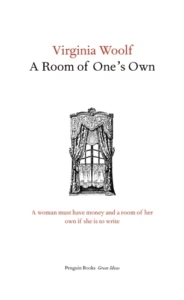
While read as a feminist manifesto about women’s place in fiction writing, this book is deeply about girlhood at its heart, especially when we take into regard Virginia Woolf’s writing about girlhood, her fiction character Judith Shakespeare, after all, is a paradigm of girlhood’s limitations and destruction.
A girl starts out as ambitious, driven, full of thoughts, and sometimes when those thoughts aren’t allowed to grow fully into their majestic capabilites, she ends up walking into a river with her pocket full of stones. “She would have been so thwarted and hindered…that at last, in her madness, she killed herself.”
Girlhood is that stage where the teaching first begins—teaching its recipient to disappear. By raising contemporary issues of girlhood, not allowed to educate themselves, not allowed to chase professions, Woolf politicizes her lectures to aim for change. “Any woman born with a great gift in the sixteenth century would certainly have gone mad, shot herself, or ended her days…”
Judith had Shakespeare’s genius but not his liberty. She wasn’t allowed to be the playwright who could get famous, get his work handed down since centuries to reach people in all corners of world to be studied and dissected and praised all the same.
Her insistence for money and a room of one’s own finally asks for intellectual freedom of girls, to not be defined and not be denied. To “write as women” is what it all comes down to. A story about girlhood after all, is best spoken by a girl herself.
#7 The Blue Sisters
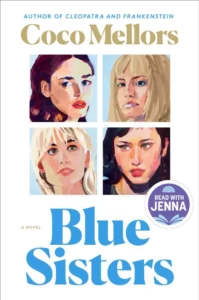
A moving tale of sisterhood, something that goes along with girlhood too well. Three different women—Avery, Bonnie, Lucy—are forced back into New York and deal with the death of their sister Nicky. Each sister carries the weight of their own self-destructive impulses, complicated love, addiction, their own ways of managing a shared grief.
The portrait of sisterhood is unflinching, grief, memory and confrontation shows how girlhood yearns to be seen, loved, remembered.
#8 Her
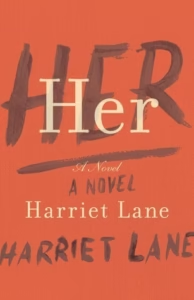
This book shows a beautiful, deep exploration of womanhood—of that girlhood still lingering within you somehow, of fragile boundaries between admiration and possession. It begins with two women, Nina and Emma, and traces a dark, tense exploration of first meetings and seeming simplicity.
Beneath the polite exchanges of these two women is an unsettling psychological power play.
“I’m scared of seeing her, and I’m scared that I’ll never see her again.”
The monotony and the daily humdrum of everyday shows a kind of time passing by that happens very quickly and leaves only memories and bitter nostalgia behind.
Add to that the magical prose.
“It’s nearly September now. The sun has bleached most of the color out of the sky.”
#9 The Blue Castle
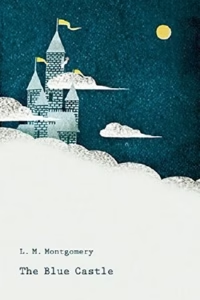
Valancy is not a girl—she is 29, a woman well into the clutches of adulthood, but there remains a quiet rebellion that simmers inside of her. She doesn’t yet allow herself to part from girlhood, from whimsy and dreams and fantasies.
She dreams up a castle in her dreams, blue and big and immeasurably dear to her because it represents all that she wants in her life. Valancy is a quiet person. She has spent nearly 30 years doing what she has been expected to do, but suddenly she finds out that she might die within the year, and suddenly she cannot simply exist anymore.
She needs to live.
She recalls a memory of when she was a little girl playing with other girls in the playground, each trying to make dust piles to see who made the biggest. Then one of the older girls had an inspiration.
“Let’s put all our dust on Olive’s pile and make a tremendous one,” she exclaimed.
Frenzy seemed to seize the girls. They swooped down on the dust-piles with pails and shovels and in a few seconds Olive’s pile was a veritable pyramid. In vain Valancy, with scrawny, outstretched little arms, tried to protect hers. She was ruthlessly swept aside; her dust-pile scooped up and poured on Olive’s. Valancy turned away resolutely and began building another dust-pile. Again a bigger girl pounced on it. Valancy stood before it, flushed, indignant, arms outspread.
“Don’t take it,” she pleaded. “Please don’t take it.”
“But why?” demanded the older girl. “Why won’t you help to build Olive’s bigger?”
“I want my own little dust-pile,” said Valancy piteously.
She wants a story, something for her life to hold, something so completely her own that no one could. She wants a dust pile of her own. She wants to build a life that she can call her own and live and love and protect fiercely. Isn’t that what girlhood is?
This yearning for more, unthinking of what exactly it is you have so long as it is yours. It is the reaching out, unconcerned and unafraid, towards the whole world, like putting your fist in the void and coming out with something solid.
#10 Anne of Green Gables
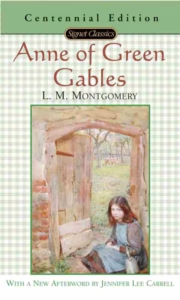
This book holds the kind of relatable nostalgia that comes with old paper and green imagery. Lavender, lilies, daffodils flying with the breeze and you can almost feel them under the tips of your fingers. Soft and feathery. As if we are the one walking through Lover’s lane on a misty, violet evening.
The chill tingling our arms. We look up at the ceiling and nearly see a starry moonless sky instead. Birds singing in the distance. Whistles and Footsteps. Ribbons and shared jokes. Carrots. Broken slates and amber afternoons. An uneaten apple sitting innocently on the faded wooden desk in a brown classroom. Orchids, singing sparrows and old friends.
The sun shining on our hair as we remove cakes from a picnic basket. The sun going down in an ocean of pink and blue as we try to finish them off between the laughter. Books, childhood drama, old stories, and all of this turning into memories that can still be held dear. Even though there’s so much that’s new.
Girlhood—childhood!—floats through every page and every word, every fantasy that spins around in Anne’s wonderful mind. This is a beautiful book with beautiful friendships. It shows us people who love each other, love themselves, and most of all, love life.
#11 A Thousand Splendid Suns.
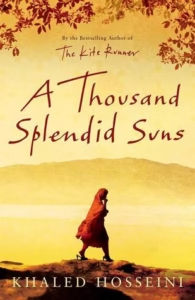
This book isn’t just girlhood, but girlhood that finds itself bound by more limitations than just that of sex. The war doesn’t give some girls (and even women) space to breathe. Through the main characters Marian and Laila, we see themes of courage, love, sisterhood, surviving in a world that labels you—as is stated in the first chapter itself—a harami.
“Learn this now and learn this well…” Mariam’s girlhood is being shaped itself by the shame and silence imposed on her. Laila’s early years, on the other hand, begin in contrast with a hopeful future, a possibility that girlhood could be celebrated just as well as it is sometimes condemned. Their relationship with each other too, evolves into one of maternal-sisterhood, of nostalgia and recounting old tales together, reclaiming their lost happiness and freedom.
“Mariam is in Laila’s own heart, where she shines with the …”
A thousand splendid suns, that’s what girlhood is sometimes. Sometimes it’s dark, gloomy nights that never ends. Sometimes it’s silence, sometimes screaming. Someone finds themselves crying in the corner, someone laughing in hysteria. Someone’s looking for answers. Someone’s decided that’s never find them.
Girlhood is being little women, stuck in a box, girls your own age are the only ones who get you. Her. It’s been referred to in the third person, rarely addressed. Her. Girlhood is also summer afternoons spent on the grass in the backyard, it’s laughing till your lungs hurt, it’s five days every month where you hate yourself, it’s beauty, it’s mess, it’s kindness.
It turns out, the wanderer above the sea of fog is sometimes a girl too. She’s escaped there from the world because no one’s staring at her there, no one’s laughing, no one’s making fun of her.
I, with this winged nature fraught,
These visions wildly free,
This boundless love, this fiery thought —
— Alone I come — oh! give me peace, dark sea!-“The Last Song of Sappho,” Felicia Hemans
If you’d like to read more about girlhood and its eternal, unflinching honesty in the face of all that questions its beauty, read Poems About Girlhood: From Plath to Dickinson.
